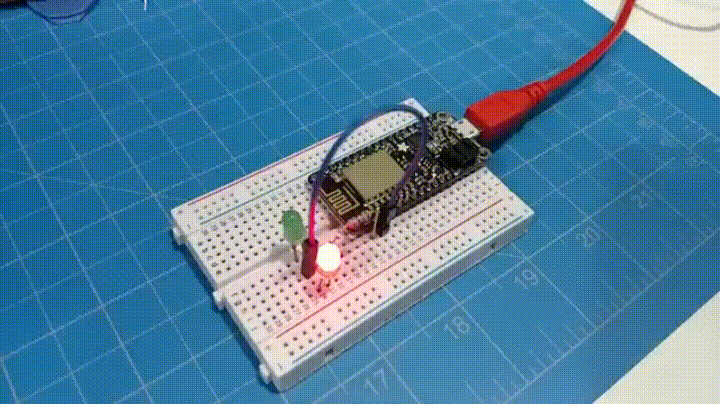
If you post something on Imgur, or any social sharing site really, you’re likely interested in how many people like, or in this case, “upvote” it. You could obsessively check the site every few minutes, which is probably a waste of your time, or you could instead build your own blinking imgur upvote counter based on Jarek Lupinski’s well-documented tutorial.
Although the finished build doesn’t look that difficult, his instructions are perhaps a little longer than you might suspect. Never fear though, as he puts it, “Don’t let the length of this tutorial throw you; I was just very detailed in my approach :) This project needs no tools or special setup, and can be finished in about an hour or two.” His aim is to let newcomers to electronics jump into this cool project. As someone who has worked with microcontrollers, but has yet to try interfacing with a site like Imgur, Twitter, or any number of social channels, I think it looks like a great place to start connecting your projects “to the cloud.”
Lupinski, who majored in biomedical engineering, wrote all the code for this build, and created a similar device seen here to show off his skills. After receiving inquiries about how to make it, he simplified things and released the tutorial seen here.
Though a fairly simple project now that the code is openly available, Lupinski has been working on this project for about a year. The design has iterated from one version to another, and now stands at version four. As he puts it, “Once I simplified the hardware, it only takes a few minutes to assemble.” To keep it easy for beginners, Lupinski chose to use the Huzzah kit from Adafruit.
It was the only kit available online which contains the ESP8266 package in a USB-programmable form-factor with headers pre-soldered, which helps people who don’t have a soldering iron jump into electronics quickly.
One thing about the instructions that may seem unnecessary is the hardware test done after everything is physically set up. Lupinski notes that:
The Hardware Test was a diagnostic tool I plan to use if this turns into a kit or consumer device. I always design my circuits with Design-For-Manufacturing in mind, because it’s always a surprise to me which of my designs get requests for kits or commissions.
So perhaps if you’re a somewhat experienced electronics hobbyist, you could skip that step. On the other hand, if you are comfortable with this type of build, it’s not like loading a little code will take that long. It could save you time later, when, for example, you realize early on that you’ve swapped the positive and negative sides of an LED!
Though it’s not hard to see how cool this device is after the fact, when asked about his inspiration, Lupinski replied that:
I want to be a professional electronics designer, and my personal style is showcasing single points of data in an appealing, small, and inexpensive manner. For example, this gadget only shows one thing: your Imgur Reputation. Based on that single point of data, you can have the LED glow green when you get more points, or red when you lose points. A similar gadget I made previously showed whether or not the weather forecast calls for rain in the next 12 hours by just blinking
a blue LED.
He’s currently working on a “Puck” series of programmable boards, which are meant to be programmable open-source devices that anyone with basic coding skills can develop scripts for. One of those can be seen here, and appears to be a greatly expanded version of the blinking weather display referenced above.
Blinking LEDs for upvotes is interesting, but I can’t help but think that since Lupinski has provided the basics for interfacing with Imgur, makers, hackers, and perhaps even those new to the scene could expend this build into something even cooler. Perhaps a servo-driven meter to show your popularity, or something much more outrageous could be done. The possibilities are endless!
If you’re digging Lupinski’s current build, he also had a build featured on Make: several years ago, his old school telephone handset with Bluetooth built-in. It’s pretty neat, and seems like it would be quite useful!
[via Reddit]
ADVERTISEMENT
Join Make: Community Today













